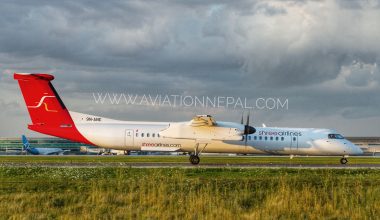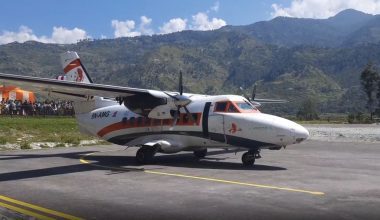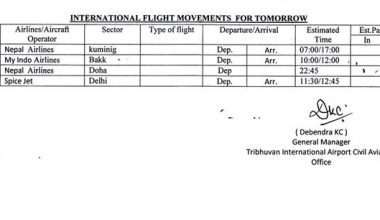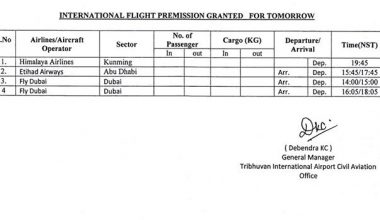Minister for Culture, Tourism and Civil Aviation Yogesh Bhattarai has expressed confidence that the flight ban imposed by the European Union (EU) on Nepal’s airspace will be lifted soon.
Stating that Nepal’s air safety rate is far ahead of other countries, he clarified that there is still no reason for the EU to impose a flight ban on Nepal.
Announcing the ‘Aviation Safety Report-2020‘ published by the Civil Aviation Authority of Nepal (CAAN) today, Minister Bhattarai said that Nepal’s aircraft could soon fly to any country in the world as Nepal is in the process of reforming the policy and institutional structure of the aviation sector.
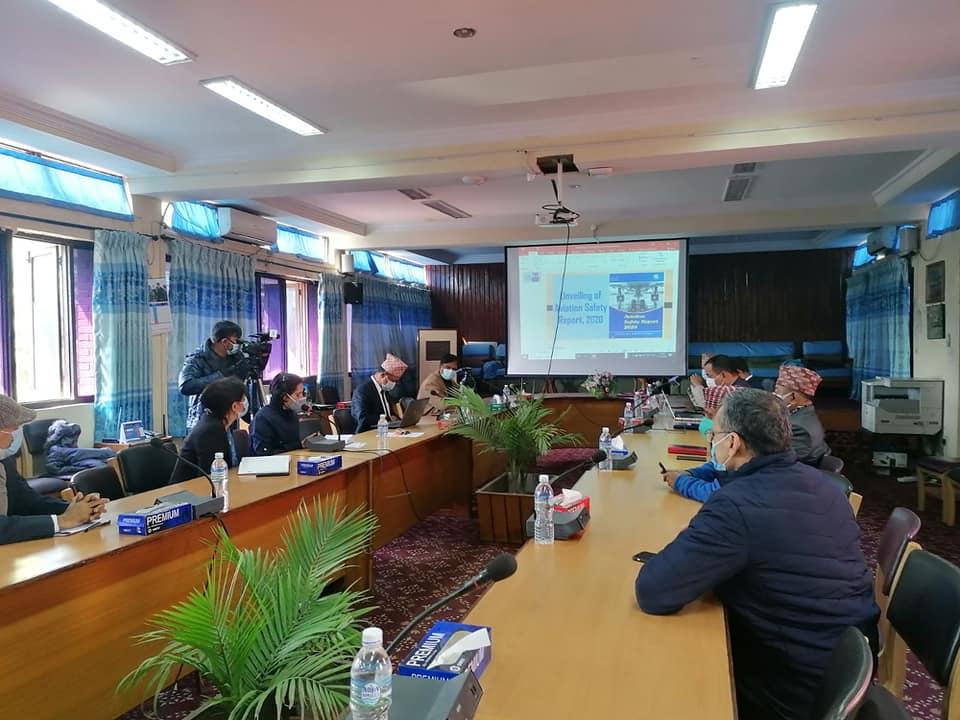
He said: “Our flight ban is still in place in European countries, we are higher than in other countries in terms of air safety, but why the ban is still in place?”
He spoke in support of the US Alliance but said maintaining some independence was necessary for the EU. Minister for Tourism Bhattarai said that the EU sanctions would be lifted soon after completing the legal process.
He said that the bill related to the division of CAAN would be finalized soon.
Stating that Nepal’s flight safety is the best in South Asia, he directed the CAAN staff and airlines to work to reduce the accident rate to zero in the coming days.
Read More
According to CAAN, Nepal has made about 67 percent progress above the 60 percent set by the International Civil Aviation Organization (ICAO).
While some countries under ICAO have not maintained this level, Asia-Pacific countries have an air safety rate of 64 percent.
Minister Bhattarai said that significant progress had been made in aviation in recent times, and the accident rate has also decreased even though Nepal’s airspace is a global member and has to comply with domestic obligations and international rules and regulations.
He said that the only Tribhuvan International Airport in Nepal was not closed even for a day during the transition of COVID-19 and the service flow was continuous. He informed that the remaining international destinations would be operated soon. A recent cabinet meeting had decided to open the regular flights from all country.

CAAN Director General Rajan Pokharel said that Nepal was progressing above 60 percent of the ICAO’s Global Aviation Safety Plan and that work needed to be done to raise the rate to 75 percent. According to him, the average accident rate in the last three years has been one accident and seven deaths per year.
CAAN has been making public the Aviation Safety Report every year since 2017. The report has been made public to present an example that Nepal is progressive and transparent in aviation security.
Air accident rate decreases in Nepal
Due to the use of modern safety systems in-flight safety and workforce building, Nepal’s air accident rate has decreased. The death rate has also come down.
This is also confirmed by the progress made in Nepal’s aviation safety rate over the last ten years. According to the 2019 Aviation Safety Report made public by CAAN, one accident and three deaths have occurred in Nepal’s airspace. In 2010, 36 people were killed in two accidents. Similarly, seven people have died in two helicopter accidents in 2019.
CAAN Deputy Director-General Narendra Thapa said that the number of air accidents and deaths has decreased in the last year while presenting the safety report.
Experts say that the main challenge of air accidents in Nepal is small 19-seater aircraft in hilly areas, challenging geography, weather conditions, short runways, etc. Raju Shrestha, head of the CAAN air safety department, said that the CAAN has formed a separate security team for the flight of planes and helicopters at remote airports and has taken various safety measures in collaboration with the airlines.
Similarly, Nepal’s flight safety rate has increased due to the coordination and cooperation of ICAO and other international aviation organizations.

